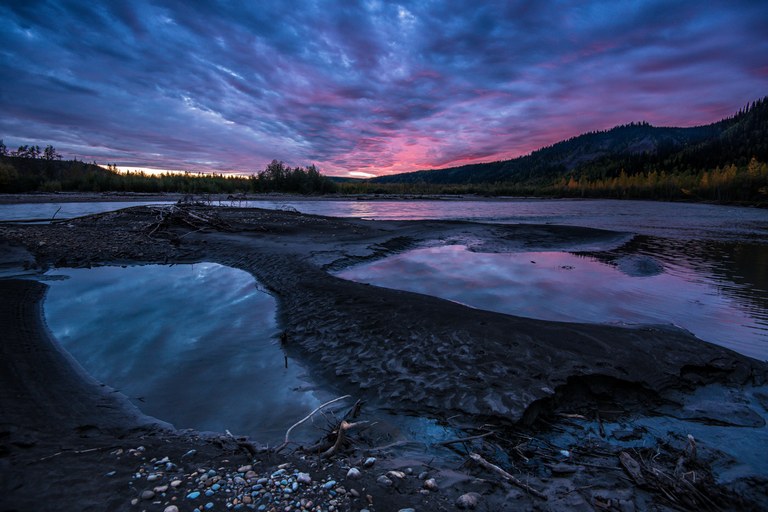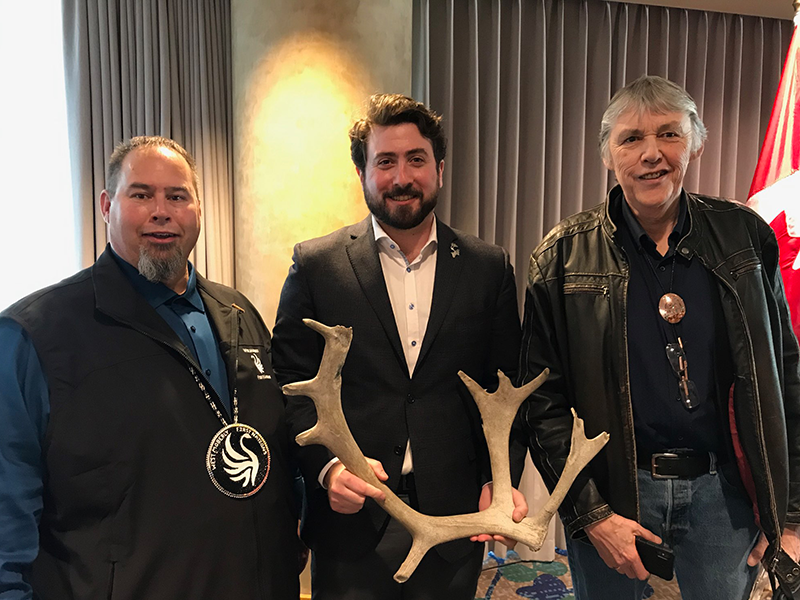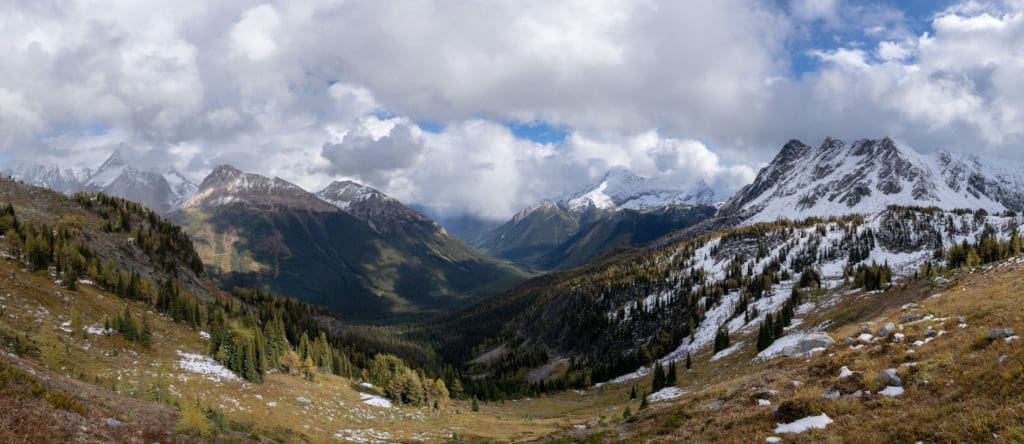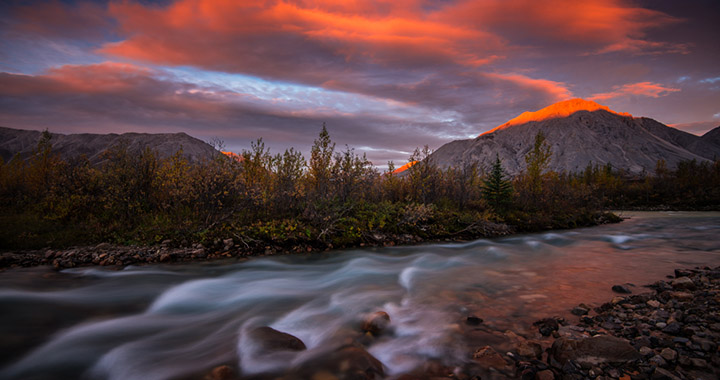Collaboration for conservation
From time to time, the problems we all face can seem overwhelming. Headlines on environmental stories these days can be shocking, sometimes even terrifying, when they talk about collapse of biodiversity and loss of large wildlife species, massive insect die-offs, and pollution affecting large waterways and lands.
But there is hope — for conservation and people — as scientists, advocates and communities of people like you strive for solutions and a better tomorrow.
Right now, governments around the globe are recognizing the role Indigenous laws and knowledge systems play in conservation and protecting biodiversity. New Indigenous-led conservation areas are being designated, and there is support for conserving natural heritage including culturally significant plants and animals.
Indigenous Protected Areas (IPAs), sometimes called Indigenous Protected and Conserved Areas (IPCAs) in Canada, play an important part, as does supporting conservation of natural heritage including culturally significant plants and animals. New Indigenous-led conservation areas have proliferated in Canada including in the Yellowstone to Yukon region recently. The current federal government has committed to ensuring that Indigenous leadership is engaged in conservation advances. In the coming years, up to 27 Indigenous protected areas are expected to be established under the Canada Nature Fund’s Target 1 Challenge.
On the U.S. side of the Yellowstone to Yukon region some tribes are establishing tribal wilderness areas and other designations, as well as envisioning new designations in the future. Likewise, conversations have increased around co-management such as on the National Bison Range on the Flathead Indian Reservation and in the Badger-Two Medicine region of the Crown of the Continent.
Recognizing the role Indigenous Peoples have as decision-makers in conservation and as stewards of the land is key. Historically, many parks were carved out of traditional territories of Indigenous Peoples without their engagement or consent.
Today, Indigenous Peoples are advancing ambitious visions for conserving large areas of their traditional territories that would conserve culture and nature. Working together with the federal and provincial/territorial governments, such efforts are a way to conserve nature and for society to acknowledge Indigenous Peoples’ ties to the land while supporting reconciliation.
What is an Indigenous-led protected area?
Around the world, how an IPA is designated and qualified can be contextually sensitive and informed by many factors.
According to International Institute for Sustainable Development designation considerations include: “distinct histories and development of Indigenous stewardship, diverse experiences and relationships between Indigenous Peoples and post-colonial powers, and unique evolutionary, human and environmental factors that have led to the social and ecological landscape we see today.”
Indigenous-led conservation comes by many names, including IPAs, IPCAs and more. IPAs (also referenced as IPCAs in Canada) are often created in collaborative situations, involving territorial/Indigenous, provincial and federal governments. National park reserves, tribal wilderness areas, tribal parks and wildlife areas have all been used to describe these areas.
How is Y2Y involved?
As an organization that understands the power of partnership, we work on building relationships with many groups, including Indigenous governments, people and organizations. Powerful collaborations are built on trust, mutual goals and respect. More detail can be read in our principles for working with Indigenous Peoples.
Y2Y recognizes and respects that Indigenous Peoples have title to and/or rights and/or cultural interests within traditional territories and often have decision-making powers on land use and resource allocation.
As a respectful partner, we are continuously working to advance shared nature conservation priorities as well as to understand, respect and support cultural values associated with lands in the Yellowstone to Yukon region.
In collaborating with Indigenous governments, people and organizations, Y2Y works where desired and appropriate to amplify Indigenous conservation voices and visions within our partner networks and beyond — where they may not always be heard otherwise.
Where is it happening?
Recent examples of Indigenous-led conservation include:

Protection of Yukon’s Peel watershed
Following 15 years of consultation, legal battles and community engagement, the Peel watershed land use plan was signed in Yukon Territory in August 2019. The plan, which guides the future use of land and resources of 67,431 square kilometres, was signed by the Yukon government and the First Nations of Na-Cho Nyäk Dun, Tr’ondek Hwëch’in and Vuntut Gwitchin, as well as the Gwich’in Tribal Council of the Northwest Territories.
As the northern anchor of the Yellowstone to Yukon region, the Peel is a wilderness rich in biodiversity, where caribou, grizzlies and wolves still thrive. For the First Nations who call it home, protecting the Peel means preserving their history, their cultural identity and their future.

Klinse-za Provincial Park expansion in British Columbia
In February 2020, the governments of two Treaty 8 First Nations — West Moberly and Saulteau — British Columbia and Canada signed an agreement to protect and recover caribou in northeastern B.C. The agreement protects roughly 7,500-square-kilometers including a new 2,000-square-kilometer Indigenous protected area, expanding the Klinse-za Provincial Park located west of Chetwynd and Hudson’s Hope.
This area and the Hart mountains are a bridge of ecologically intact habitat between two big islands of wild land — the Muskwa-Kechika area to the north, and the big parks of the central Rocky Mountains to the south. These new agreements help protect and connect the Yellowstone to Yukon region, one important for caribou but also for grizzly bears and 35 other threatened and endangered species.

Qat’muk in British Columbia
In January 2020 the Ktunaxa Nation announced its intention to create an Indigenous protected area in Qat’muk, the Jumbo Valley and surrounding area found in the Purcell mountains of southeast B.C.. Ktunaxa are supported in this by the governments of Canada and British Columbia. Two major goals are to protect biodiversity and support Ktunaxa cultural values — for Ktunaxa, the area is home to the grizzly bear spirit.
As part of the Yellowstone to Yukon corridor, this region serves a critical role as one of only two remaining mountain ranges in North America connecting grizzlies that roam between Canada and the United States, key to maintaining strong genetic diversity.
Edéhzhíe IPA in Northwest Territories
In October 2018, the government of Canada and Dehcho First Nations signed an agreement protecting the Edéhzhíe Indigenous Protected Area/National Wildlife Area — the first of its kind in Canada since the inception of the Pathway to Canada Target 1. These protections conserve 5,500 square miles (14,249 square kilometers) west of Great Slave Lake from further industrial development and will be jointly managed by Dehcho First Nations and the federal government.
It’s twice the size of Banff National Park, is a culturally significant area for the Dehcho and Tłichô Dene peoples and is habitat for boreal caribou, wood bison and other large animals, as well as a key area for waterfowl and other migratory birds. Edéhzhíe is also an important watershed that supplies fresh water to much of the Dehcho region.
How you can help
- Read up, get informed and support Indigenous voices with your own;
- Support Indigenous decision making. Comment on plans that involve Indigenous leadership in conservation. Sign up for our action alerts to learn about opportunities.
Additional reading
Interested in learning more? Here are some white papers, technical reports and research papers on the topic:
- We rise together: Achieving Pathway to Canada Target 1 through the creation of Indigenous Protected and Conserved Areas in the spirit and practice of reconciliation
- Canada’s Conservation Vision: A Report of the National Advisory Panel
- Research shows the number of birds, amphibians, mammals and reptiles were highest on lands managed by Indigenous communities in Australia, Brazil and Canada. Vertebrate biodiversity on Indigenous-managed lands in Australia, Brazil, and Canada equals that in protected areas, published in Environmental Science and Policy, November 2019
- Indigenous protected areas are the next generation of conservation, published at Phys.org in November 2018
- Canadian Parks Council Aboriginal Peoples and Canada’s Parks and Protected Areas: various case studies
- Indigenous peoples defend Earth’s biodiversity — but they’re in danger, published in National Geographic November 2018


